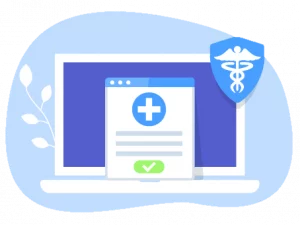 As the digital health revolution continues to unfold, securing the confidentiality of Protected Health Information (PHI) is more critical than ever. The Health Insurance Portability and Accountability Act (HIPAA), the bulwark of patient data privacy in the U.S. healthcare system, has evolved significantly over the years to meet the ever-changing challenges posed by advancements in healthcare and technology.
As the digital health revolution continues to unfold, securing the confidentiality of Protected Health Information (PHI) is more critical than ever. The Health Insurance Portability and Accountability Act (HIPAA), the bulwark of patient data privacy in the U.S. healthcare system, has evolved significantly over the years to meet the ever-changing challenges posed by advancements in healthcare and technology.
The Evolving HIPAA Landscape
The HIPAA Omnibus Final Rule in 2013 expanded the scope of HIPAA to include business associates, strengthened patient rights, amplified penalties for non-compliance, and updated breach notification rules. Today, in 2023, the HIPAA Privacy Rule is set for another round of changes. This transformation particularly concerns PHI related to substance use disorder (SUD) and mental health treatment records, focusing on privacy, consent, and information access under the Confidentiality of Substance Use Disorder Patient Records (42 CFR Part 2).
Decoding 42 CFR Part 2
Under 42 CFR Part 2, federally assisted programs and organizations such as SUD treatment facilities are mandated to secure the confidentiality of patient records. Key provisions of this regulation include:
- Consent requirements: Patients need to provide written consent for any disclosure of their SUD treatment records except in specified circumstances.
- Purpose of disclosure: The disclosure of SUD records should directly relate to patient treatment, payment, or healthcare operations unless authorized by specific regulations.
- Redisclosure prohibition: There are restrictions on further disclosure of patient records received from a Part 2 program.
- Court-ordered disclosures: Clear procedures are outlined for disclosing patient records under court orders or subpoenas to protect patient privacy.
- Security and auditing: Organizations must implement safeguards to protect patient records from unauthorized access, including using secure electronic systems and audit controls.
Legacy Act: Bridging the HIPAA and Part 2 Regulations
The Legacy Act, also known as the Overdose Prevention and Patient Safety (OPPS) Act, is a game-changing legislation for SUD patients. It enables broader consent for sharing their SUD records, embodying the principle of ‘minimum necessary information’, with the right to revoke consent at any time. It aligns the privacy standards of HIPAA with those specific to SUD patients, thus bolstering patient privacy and facilitating better healthcare coordination.
Introducing Enhanced Protections and New Patient Rights
The proposed changes aim to strengthen protections for SUD patients and introduce new rights, including knowing who accessed their SUD records and requesting limits on disclosures. Furthermore, they will extend HIPAA’s breach notification requirements to breaches of Part 2 records.
IPAA Requirements and Notice of Privacy Practices
To align with the changing landscape, covered entities maintaining Part 2 records will need to update their HIPAA Notice of Privacy Practices. This notice informs individuals about their rights concerning the privacy and security of their health information. The updated notice should clarify SUD-related information handling, new patient rights, and instructions on exercising these rights.
Compliance and Transparency
These anticipated changes demand timely action from covered entities. They should stay updated with the HIPAA Privacy Rule and Part 2 regulations and promptly revise their Notice of Privacy Practices. This process not only ensures compliance but also promotes transparency, accountability, and patient engagement.
As we navigate the complexities of these changes, consider seeking guidance from legal or compliance professionals. Remember, staying informed and proactive can make the transition smoother and secure. Stay tuned for more updates on how these changes may affect your organization’s HIPAA compliance.
Online HIPAA compliant fax services will play a pivotal role in meeting these changing demands, providing a secure platform to transmit and store sensitive health information. As the healthcare landscape evolves, so too will the measures we take to protect patient information in the digital realm.

